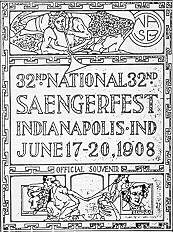
18. Music fests organized by German-Americans were major cultural attractions in many cities. In 1908 the New York Symphony with Walter Damrosch was the festival orchestra in Indianapolis.
Return to Chapter Five
Return to Illustration Credits
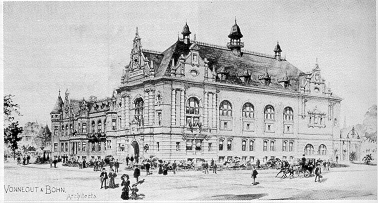
19. Completed in 1898, the German House in Indianapolis (renamed Athenaeum during WWI), became the home of the Turners and the Normal College of the American Gymnastics Union. Today the Athenaeum Foundation is seeking funds for the restoration of this magnificent German-American landmark.
Return to Chapter Five
Return to Illustration Credits

20. Grand parade at the 1905 National Turnfest in Indianapolis. The float depicts the Turners serving in the Civil War. From the Turnfest souvenir album, 1906.
Return to Chapter Five Return to Illustration Credits

21. Newspaper ad for the "Grand Masked Ball" of the Indianapolis Mannerchor during the 1867 carnival season. German-American orgnizations were leaders in promoting music, fests, and parades.
Return to Chapter Five Return to Illustration Credits
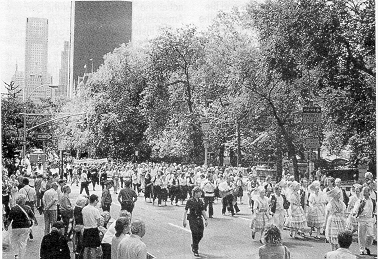
22. The annual Steuben Parade, New York, September 15, 1990.
Return to Chapter Five
Return to Illustration Credits
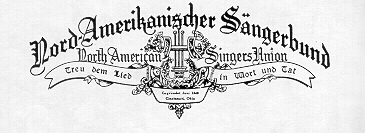
23. The national federation of German-American singing socieities was founded in Cincinnati in 1849.
Return to Chapter Five
Return to Illustration Credits

24. The Directory of the Germanic American Societies in the USA (1988 edition) shows 830 entried of "Vereins" (clubs, organizations) of various orientations, including Austro-American and Swiss-American groups. The actual number easily exceeds 1,000. In pre-World War I days Indianapolis alone had 56 German-American clubs--not even counting all the church-affiliated ones.
Return to Chapter Five
Return to Illustration Credits
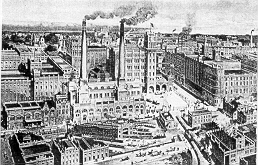
25. Anheuser-Busch in St. Louis, the world's largest brewery.
Return to Chapter Five
Return to Illustration Credits
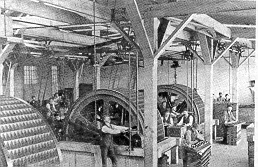
26. A bottling room at Milwaukee's Schlitz Brewery. "The Prohibition years (1919-1933) were particularly (and intentionally) hard on German-Americans, who controlled most U.S. breweries" (Ann Galicich).
Return to Chapter Five
Return to Illustration Credits
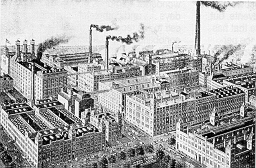
27. The Pabst Brewery in Milwaukee.
Return to Chapter Five
Return to Illustration Credits
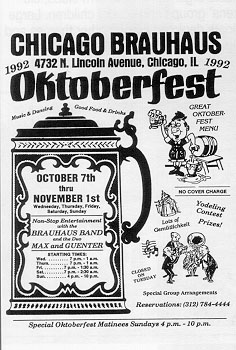
28. Before WW I German-American Day was a big event in cities with German heritage. Reintroduced during the Tricentennial of German Immigration to North America (1983), its observation on October 6 does not draw the crowds of the increasingly popular Oktoberfests.
Return to Chapter Five
Return to Illustration Credits
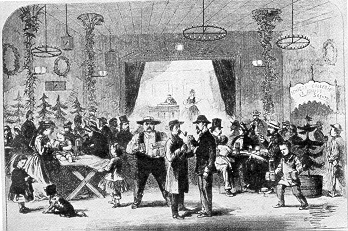
29. Interior of a German restaurant in New York in the 1880s. German inns and beer gardens were centers of neighborhood sociability ("Gemütlichkeit").